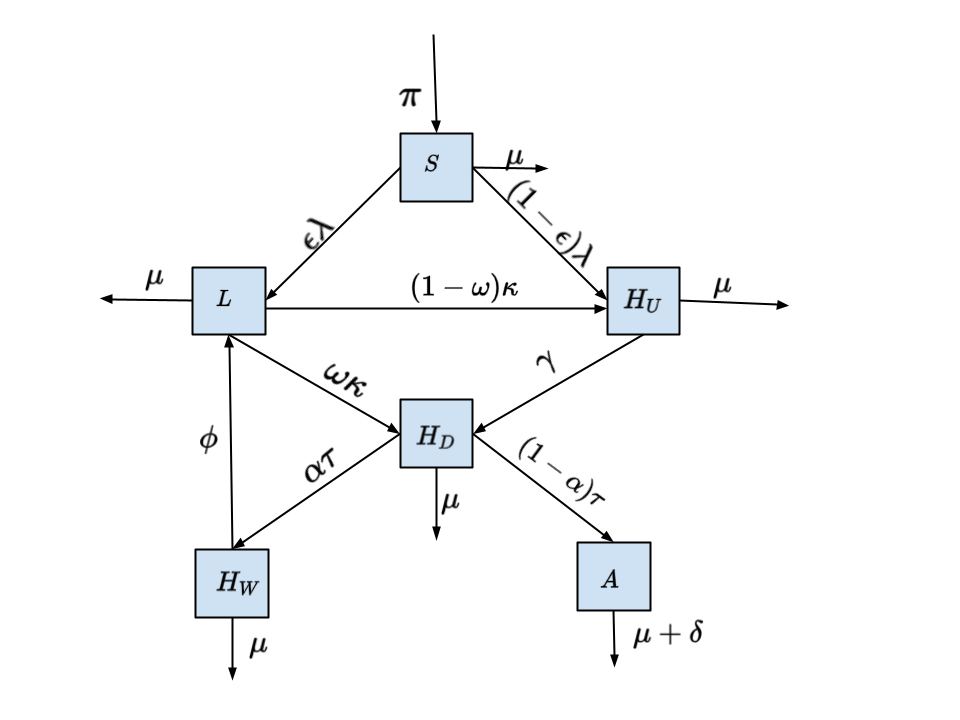Understanding the Transmission Dynamics and Control of HIV Infection: A Mathematical Model Approach
Keywords:
HIV/AIDS, Global stability, Bifurcation, Lyapunov functionAbstract
New challenges like the outbreak of new diseases, government policies, war and insurgency etc. present distortion, delay and denial of persons’ access to ART, thereby fuelling the spread and increasing the burden of HIV/AIDS. A mathematical model is presented to study the transmission dynamics and control of HIV infection. The qualitative and quantitative analyses of the model are carried out. It is shown that the disease-free equilibrium of the model is globally asymptotically stable whenever the basic reproduction number is less than unity. It is also shown that a unique endemic equilibrium exists whenever the basic reproduction number exceeds unity and that the model exhibits a forward bifurcation. Furthermore, the Lyapunov function is used to show that the endemic equilibrium is globally asymptotically stable for a special case of the model whenever the associated basic reproduction number is greater than unity. The model is calibrated to the data on HIV/AIDS prevalence in Nigeria from 1990 to 2019 and it represents reality. The numerical simulations on the global stability of disease-free equilibrium and endemic equilibrium justify the analytic results. The fraction of the detected individuals who stays in the treatment class plays a significant role as it influences the population of the latently-infected individuals and AIDS class by preventing individuals from progressing into the AIDS class.

Published
How to Cite
Issue
Section
Copyright (c) 2023 Saheed Ajao, Isaac Olopade, Titilayo Akinwumi, Sunday Adewale, Adelani Adesanya

This work is licensed under a Creative Commons Attribution 4.0 International License.




